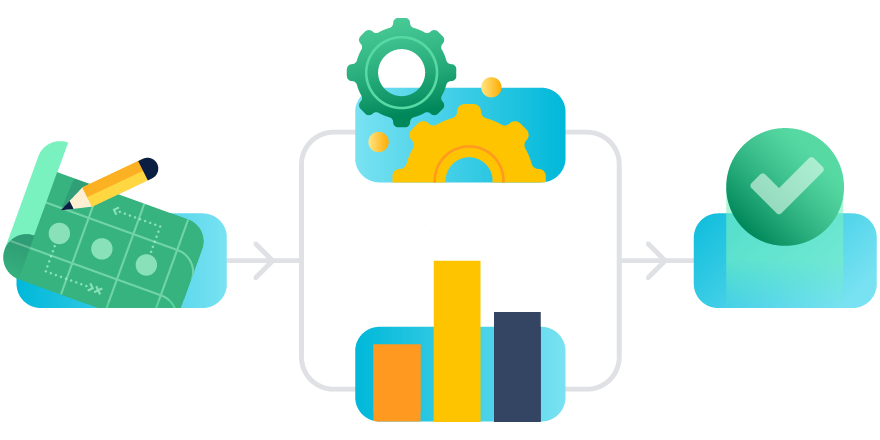This article was written with Looker, a business intelligence software and big data analytics platform that helps you explore, analyze, and share real-time business analytics easily.
Most organizations only use a fraction of available data. Integrating a data strategy into your team’s development workflow is key to making sure data and insights are actionable where they’re needed most. Data in your workflow ensures you are always considering the latest, most up-to-date information when making decisions. This makes it impossible to neglect the most important part of your data strategy: making sure the data is available when and where it’s needed.
Here are six areas to consider when integrating data into your workflows:
1: Incorporate relevant, actionable metrics into the dataset
While most product teams tend to focus their analysis on user behavior, data from the product itself isn’t the only source of information you can use to improve your product and workstreams. Data from issue tracking tools can provide valuable insight into historical development performance and can help you plan for future development cycles.
What’s more, this data is extremely actionable.
2: Combine data sources to get the full picture
Successful analytics often incorporates a wide range of sources outside product data to uncover insights into areas of product performance and improvement. Data from sources such as sales, marketing, and finance are commonly available to be combined with existing product data.
Not only does this new data provide a fuller picture of how the product is received, purchased, and used, but it can also determine the impact of product development choices. For example, you can see the impact of a new feature on revenue, the impact of a bug on customer retention and other information that might guide the prioritization of issue resolution.
3: Build meaningful KPIs
Data from instrumented products is increasingly valuable because it shows how users interact with the product directly. But with all of this data, it can be hard to stay focused on the right metrics.
Keep your product team focused on the task of building great products by developing clear, team-wide definitions of key performance indicators you can all agree upon. This includes not only product performance, but customer engagement information and operational use cases as well.
4: Make data adoption easy by integrating it with tools your teams are already using
Your team likely uses a wide range of tools in your day-to-day workflows. Email, chat, product management software all play a role in how we coordinate, track, and communicate every day. Copying static data into these tools manually can insert data into the workflow, but is cumbersome and complex. Instead, make inserting and accessing data from within the workflow easy by having it live there.
For example, if there is an error threshold indicating a problem in your product that can be tracked in your data, automatically creating an issue in Jira could immediately alert the right team to address the anomaly. The ability to move data freely from your analytics platform to and from your issue tracking system is key here. Isolating data in one or the other of these tools will strangle communication and data sharing, and each extra step decreases the likelihood that that data will be acted upon.
This can now easily be done with the new Looker Actions. This tool allows product managers the ability to update Jira tickets directly from where they analyze data in Looker.

5: Make monitoring data easy
Your team can’t be in the data all day, so make sure that when a critical change happens your team knows right away. You can set up alerts to Hipchat or email so the whole team knows when thresholds are passed or unexpected events occur.
This has the added benefit of pushing data into workflows, which is a great way to increase adoption.
6: Treat data analytics development as if it were your own product
Your data and metrics are only valuable when they relevant to the business and consistent across teams. But updating the platform and tracking changes – especially as the editors increase – can become complex and cumbersome.
Sounds familiar, doesn’t it?
To tackle this challenge, modern data analytics platforms are adopting the same version control and standardized development processes making your product team more efficient. Use version control and ticketing to keep your analytics team on track, helping them improve analytic outcomes and encourage collaboration.
Looker and Atlassian are working together to make data-driven product development workflows a reality. You can check out their apps in the Marketplace for integrations with Jira, Hipchat, and Bitbucket.

